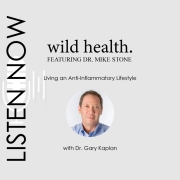The Dark(er) Side of Dark Chocolate
While we’ve come to love dark chocolate and all its benefits, a Consumer Reports (CR) article published in December 2022 found that there are reasons to be careful and evaluate what we’re consuming. Testing results showed that 23 of 28 bars had potentially harmful levels of either cadmium or lead or both when eating one ounce per day. Click here to view the article and CR’s findings.
About CR’s findings…
Consumer Reports’ researchers found that when testing for the presence of certain heavy metals, many popular brands of dark chocolate had dangerous levels of both lead and cadmium.
Lead and cadmium are environmental contaminants (along with mercury, arsenic, iron, aluminum, and several others) also referred to as heavy metals. Limited exposure is not typically harmful, but over time, repeated exposure can result in a toxic accumulation in the body and a variety of health issues.
Over the last fifty years, the Food and Drug Administration (FDA) has worked diligently to reduce the levels of toxins found in food, particularly in foods prepared for infants and children and pregnant women. There are no specific federal limits on the amount that most foods can contain, and the onus is on manufacturers to minimize or prevent exposure, however, the FDA may act in response to reports of elevated levels. Click here to read more about the FDA and environmental contaminants.
Does dark chocolate have real health benefits?
Dark chocolate has long been identified as a “super-food” and for good reason, the key is in the cocoa. Here are some of the proven benefits of dark chocolate:
- The cocoa in dark chocolate contains antioxidants that fight dangerous free radicals in your body.
- The plant-derived flavanols in dark chocolate have been shown to reduce blood pressure.
- Dark chocolate increases the elasticity of the blood vessels.
- Dark chocolate has anti-inflammatory compounds which can reduce inflammation of cardiovascular tissue.
- Reduces LDL (low-density lipoprotein) cholesterol.
In addition, a 2020 study published in Frontiers in Plant Science found that the flavan-3-olds found in dark chocolate are helpful in preventing the replication of the Covid-19 virus. Flavan-3-olds are a subtype of flavonoids (compounds with antioxidant properties) can also be found in certain teas and colorful fruits and vegetables.
Questions? Give Us a Call!
To help lower your risk of exposure we recommend that you:
- choose brands that have better safety standards.
- cut back on the frequency and amount of dark chocolate you eat, especially if you eat it every day.
- make sure you eat a wide variety of fruits and vegetables which contain many of the same benefits as dark chocolate.
Diagnosing and treating toxicity
When toxins enter the body, they hide out in “holding areas” in our tissue and can cause widespread inflammation. Some people are better at breaking down toxins and eliminating them, while others are not. Symptoms of toxicity can include cognitive issues, depression and mood swings, sleep disturbances, headaches, joint pain, or digestive issues.
If you believe you have been exposed to toxins and are experiencing symptoms that cannot be attributed to a specific health diagnosis, we encourage you to consider getting tested. Living with toxicity can not only cause its own symptoms but can slow down recovery from an existing health condition.
There are a variety of specialized tests that can detect the presence of toxins (including mycotoxins, heavy metals, infectious sources, food additives, pesticides, and other toxic chemicals). If a diagnosis is confirmed, medications, dietary changes, and nutritional supplements are the best methods of treatment. For more information, click here.
@consumerreports Our scientists measured the amount of heavy metals in 28 dark chocolate bars. Measurable amounts of cadmium and lead were detected in all of them. Learn more through the link in our bio. #foodtiktok #foodtok #foodsafety #darkchocolate ♬ original sound – Consumer Reports
Additional references:
https://www.ncbi.nlm.nih.gov/pmc/articles/PMC6950163/
https://pubmed.ncbi.nlm.nih.gov/36452001/
https://pubmed.ncbi.nlm.nih.gov/11790962/









Leave a Reply
Want to join the discussion?Feel free to contribute!